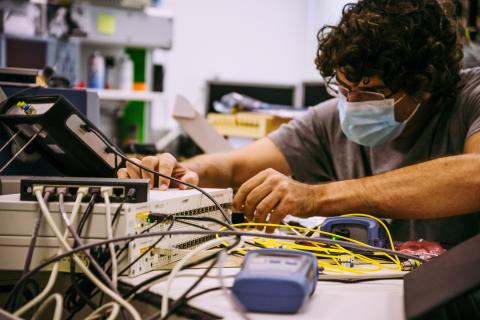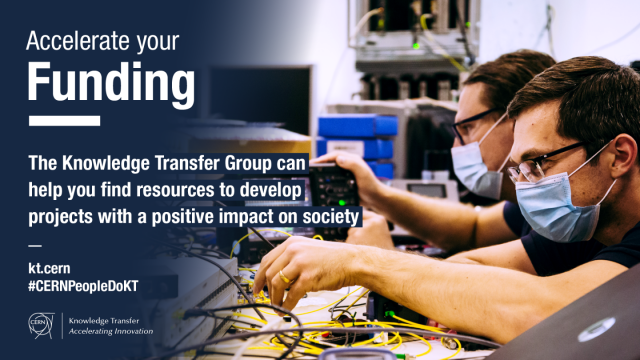Making hardware design open and free
Meet Javier Serrano, head of the Hardware and Timing Section, Beam Controls Group (BE-CO), in this issue of our Knowledge Transfer spotlight series

Javier Serrano working on the White Rabbit equipment (Image: CERN)
Javier Serrano first experienced the open and collaborative culture of CERN as a summer student. Since becoming a staff member in 1998, he has contributed to this culture by championing the establishment of the Open Hardware Repository and the Open Hardware Licence to facilitate the sharing of open-hardware design.
As head of the Hardware and Timing section of the Beams Controls group, he coordinates a team of hardware and low-level software developers for accelerator controls. “Many of our developers came from a tradition of Linux kernel hacking,” says Javier. “The word ‘hacker’ has a positive connotation in our domain. They are problem solvers; people used to collaboration, sharing and learning. I wanted to take this culture to our hardware developments.” These efforts resulted in the creation of the Open Hardware Repository (OHWR) – a place to share hardware designs openly and freely.
However, even open science needs some rules to be governed by. Javier therefore sought the help of a legal adviser from CERN’s Knowledge Transfer group, Myriam Ayass, to draft the legal framework for the Open Hardware Licence (OHL). This licence gives users the right to use hardware designs released under it freely under certain conditions, such as feeding back modifications to the community.
A key example of a design that has benefited from both the OHWR and the OHL is White Rabbit, – a technology that provides control and data-acquisition systems with sub-nanosecond accuracy and synchronisation precision of a few picoseconds. An open-source approach was built into the design from the very start. “We invented White Rabbit, because we needed a new timing system in the accelerators,” Javier notes. “But we also asked ourselves if we could make distributed real-time systems that people could use outside CERN. White Rabbit ended up being very different as a result.”
White Rabbit has received valuable feedback from its large user community, which includes the Large High-Altitude Air Shower Observation (LHAASO) project in Tibet, which studies gamma rays and cosmic rays. “They saw effects in the hardware that we hadn’t detected before, such as temperature-induced changes in delays in the fibres. They fixed it and provided their solution back to the community. This open model of development has worked in the software world but had never been tested for hardware. That we attempted something new and demonstrated that it does work is one of the things I’m most proud of.”
The OHWR and the OHL have also been used for sharing technologies used in the fight against COVID-19, such as the Open Breath Lung Ventilator and CERN’s 3D-printed mask design. His positive experiences have had an impact on how Javier now approaches new projects. “There are many opportunities to share back, provided that you have a bit of flexibility”, he concludes.

